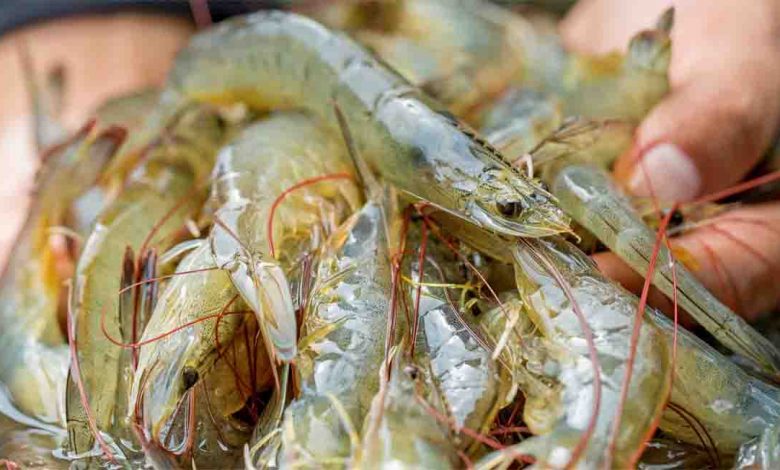Tamil Nadu sitting on Rs 50,000 crore aquaculture opportunity

GUEST COLUMN
 Shaji Baby John
Shaji Baby John
The diversity in agro-climatic conditions in the Indian coastal States is one of the natural advantages for the country to design and implement sustainable blue economy projects. The diversity is well suited to leverage for designing projects in tune with the requirements and needs of each State. For instance, take the case of Tamil Nadu, considered the cradle of the Blue Revolution in the country. The state is having the potential to generate Rs 50,000 crore per year by using the vast stretches of degraded land infested with thorns and prickly bushes with next-generation aquaculture. The districts of Toothukudi, Tirunelveli and Ramanathapuram have vast stretches of salinated coastal land that could be converted for the development of the next-generation aquaculture. These lands infested with prickly bushes, currently lying idle, are also causing an economic drain to the State government and the private owners as the high court issued an order for the removal of the bushes regularly.
A well-designed scheme to utilise the land for developing eco-friendly aquaculture ventures would help the State to easily generate Rs 50,000 crore per year in the coming decade. The adoption of the latest technology would enable in transforming these places into highly productive sustainable aquaculture farms with the capacity to generate high-quality protein-rich food production. The degraded land in the three districts is in addition to 56,000 hectares of brackish water area in the State with great potential for sustainable aquaculture. The information on the website of the Tamil Nadu Government Fisheries Department says out of the 56,000 hectares of brackish water in the state only 6,115 hectares are under aquaculture at the moment.
The opportunities for new generation aquaculture existing in the degraded land and brackish water blend well with India’s blue economy framework. The projects to uplift the coastal infrastructure as part of the Sagarmala project would provide the added impetus for better utilisation of the degraded land and brackish water resources currently lying idle. The well-designed scheme for effectively utilising these resources should also incorporate plans to address the concerns caused by climate change and by global warming. The coastal regions have been identified as one of the most vulnerable areas to be hit by global warming. The new generation of aquaculture needed to have systems and practices to minimise concerns of coastal erosion, resource depletion, livelihood issues of the coastal communities and many other related issues.
The SISTA360 protocols (System for Integrated Sustainable and Traceable Aquaculture offering 360-degree solutions) and the indoor precision aquaculture developed by our company with its roadmap for new generation aquaculture would be ideal for leveraging the potential in Tamil Nadu. The special purpose vehicles (SPVs) spearheading these innovative solutions into successful business ventures have already indicated plans to develop a network of 10,000 aqua entrepreneurs across the country using these solutions. The SISTA360 protocols and indoor precision aquaculture based on the proof of the concept method could be replicated all over the country by taking into account the agro-climatic specificities in each State. The salient feature of the next-generation aquaculture based on zero waste and net-zero energy consumption would provide a good opportunity for aqua farmers and entrepreneurs to substantially improve their income while helping the country to move away from the present aquaculture system. The new system also ensures a healthy food production system at a time when concerns over unhealthy foods dominate discussions related to public health. The other important feature of the next-generation aquaculture is using tools of information technology including AI and IoT for farming practices.
The new system offers good scope for developing a public-private partnership (PPP) model across the value chain in the marine food sector. The farm-to-fork concept with mandatory traceability norms gaining traction throughout the world makes such models essential as greater coordination between all those in the food industry value chain becomes inevitable. The regulatory agencies in the food industry too need to maintain better coordination and cooperation with the industry.
Tamil Nadu with its reputation for a proactive investor governance system could become India’s blue economy hub with the help of a well-designed project to utilise degraded lands and brackish water resources lying idle for implementing sustainable aquaculture. The project would also be a game-changer in terms of promoting economic growth along with employment generation in the coastal regions of the State. The protection of the livelihood of the coastal community is one of the core principles of the next-generation sustainable aquaculture. Tamil Nadu with its experience in heralding the first blue revolution in India is well placed to lead the second blue revolution based on the blue economy framework of the country.
(The author is the chairman of Kings Infra Ventures Limited who also writes on the blue economy and sustainable food production system. Views expressed are personal)





